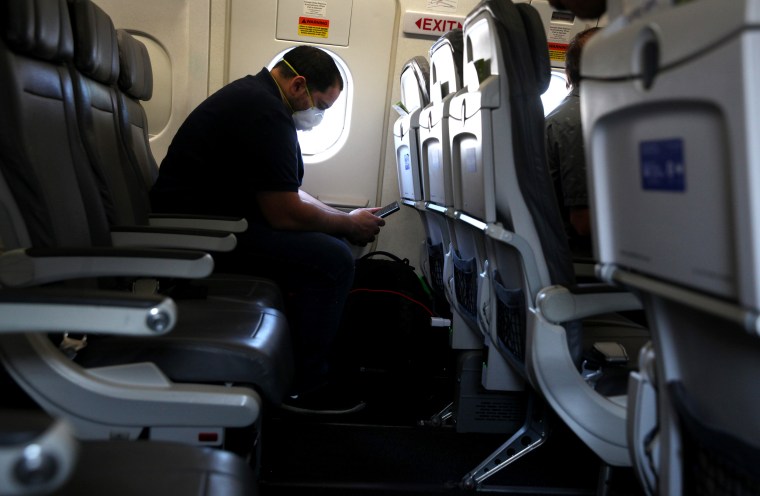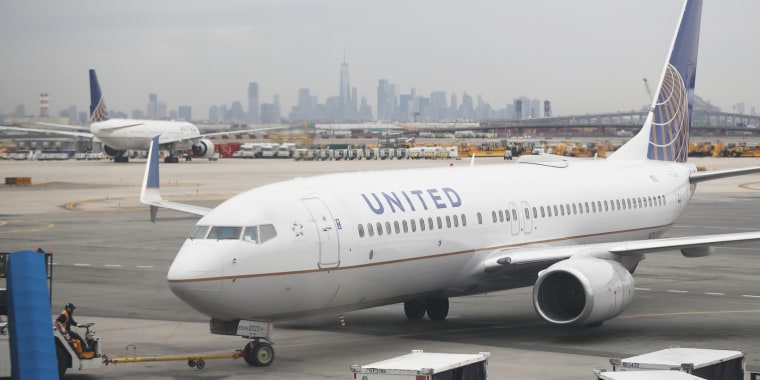United Airlines on Wednesday dismissed the notion that blocking some seats onboard would keep passengers safer from Covid-19, as policies among U.S. airlines diverge and carriers compete for far fewer travelers this summer.
Delta, JetBlue and Southwest have said they are blocking some seats onboard, an effort to put travelers at ease about flying during the coronavirus pandemic.

“When it comes to blocking middle seats, that’s a PR strategy, that’s not a safety strategy,” said Josh Earnest, United’s chief communications officer, on a call with reporters. “When you’re onboard the aircraft, if you’re sitting in the aisle, and the middle seat is empty, the person across the aisle is within 6 feet from you, the person at the window is within 6 feet of you, the people in the row in front of you are within 6 feet of you, the people in the row behind you are within 6 feet of you.”
Earnest’s comments come a day after two federal health officials criticized American Airlines for changing its policy to book flights to capacity. The Centers for Disease Control and Prevention didn’t immediately comment.
For more business updates sign up for newsletters from CNBC.
Shortly after United’s statement, Delta tweeted its statement from Friday that it would keep its economy cabins no more than 60% full through Sept. 30, “to make more space for safer travel.”
There aren’t federal requirements to distance travelers on commercial aircraft.
Both United and American alert passengers when their planes start filling up and, when available, offer the chance to switch to another flight.
“We are unwavering in our commitment to the safety and well-being of our customers and team members,” American said in a statement. “We have multiple layers of protection in place for those who fly with us, including required face coverings, enhanced cleaning procedures, and a pre-flight COVID-19 symptom checklist — and we’re providing additional flexibility for customers to change their travel plans, as well.”
United’s Earnest pointed to a series of measures the airline has used to keep passengers safe, including more intense cleaning of aircraft, social distancing during the boarding process and the use of face masks. The airline has also increased the use of touchless kiosks at airports.
All major U.S. airlines now require passengers wear masks and have threatened to ban travelers who don’t comply. They are also asking travelers a series of health questions before their flights.
Airline labor unions are pushing for federal rules requiring masks onboard. So far, officials have only recommended masks.
“There’s no way to properly socially distance on an aircraft,” said Sara Nelson, president of the Association of Flight Attendants, the union that represents cabin crews at United, Spirit and others. She said that keeping middle seats open gives flight attendants “some flexibility to use selective social distancing by moving people in the event of a medical emergency or seat the rare passenger who can’t wear a mask, such as a small child.
“But here’s the reality — the failure of government intervention to put in place a plan for aviation safety during a pandemic continues to not only put our health at risk, but also our entire economy,” Nelson said.
This story originally appeared on CNBC.


